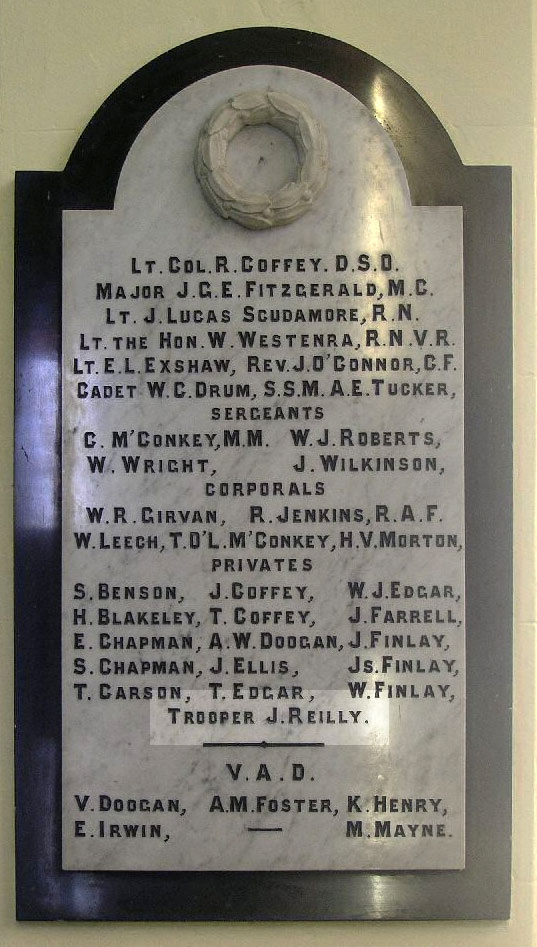Private John Reilly
John Reilly was born on 2 October 1895 at Tuckmilltate, County Monaghan, the last of four children of labourer John Reilly and his wife Mary Anne (née Cole). At the time of the 1911 Census he was living at 22 High Street in the town of Monaghan with his parents and siblings and working as a blacksmith's apprentice.
Reilly enlisted in the North Irish Horse on 19 or 20 November 1915 (No.1930). In July or August 1916 he embarked for France, where he was posted to B (formerly F) Squadron of the newly-formed 2nd North Irish Horse Regiment.
In September 1917 the 2nd NIH Regiment was disbanded and most of its men transferred to the infantry. Like the majority, Reilly was transferred to the 9th (Service) Battalion, Royal Irish Fusiliers – renamed the 9th (North Irish Horse) Battalion – but later than most, between 24 October and 26 November 1917. He may have been ill at the time the main transfer took place. He was issued regimental number 41639.
He may have seen action with the battalion at the Battle of Cambrai in November and December 1917 and during the retreat from St Quentin from 21 to 28 March 1918.
Reilly was wounded in the head in mid-1918, probably while the battalion occupied the line on the Ypres front. On 27 March 1919 he was discharged, being 'no longer physically fit for war service' (paragraph 392 (xvi), King's Regulations), and was granted a pension due to his wounds. As late as January 1923 his level of disability was assessed at 30 per cent.
In the years following the war Reilly was recorded as living at: 47 Hartington Street, Belfast; Glasslough Street, Monaghan; and 82 Park Road, Portadown.
His name is included on the Monaghan St Patrick's Church Great War Roll of Honour (below).

Roll of Honour image sourced from the Irish War Memorials site.
This page last updated 21 March 2024.
